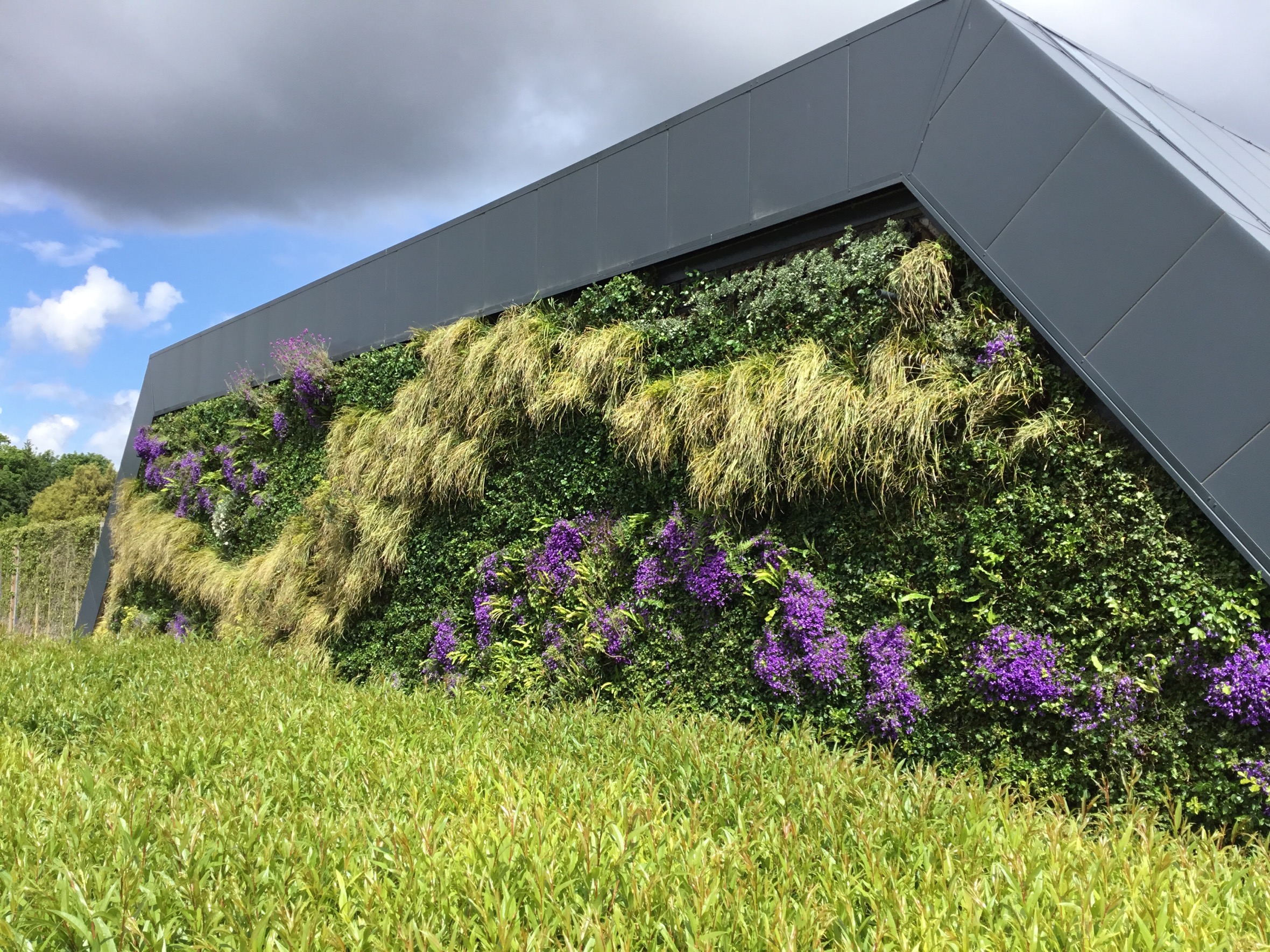When designing living walls, plant selection is a key consideration. We often get asked about native vs non-native plants. At Biotecture, we believe the best results come from a thoughtful blend of both. This approach helps us build biodiverse, resilient living walls that support wildlife while enhancing urban environments for people.
In this blog, we explore the differences between native and non-native plants, their roles in our living walls, and why a diverse mix of both can be crucial for supporting biodiversity.
Native Plants: Local Heroes
Native plants are those that naturally occur in a region without human intervention. In the UK, native plants such as ferns and ivy have evolved over thousands of years, adapting to the local environment. Their deep-rooted relationship with local wildlife makes them an essential part of any biodiversity-focused project.
Because they’ve evolved to these conditions, native plants are also more likely to thrive without additional resources, making them low-maintenance choices for living walls.
Native species play an important role in supporting local wildlife. They provide food and shelter for insects, birds, and other animals that have co-evolved with them, making them critical for maintaining local biodiversity.


Living wall at the Postal Museum in London
Non-Native Plants: Expanding the Ecological Palette
According to The Royal Botanic Garden at Kew plants are generally considered native if they have been here for over 8,000 years, so many of the plants we use today are classed as non-native and have been introduced from other regions.
These plants still offer great ecological value. For example, many non-native plants have flowers rich in nectar and pollen, providing critical food sources for pollinators. Flowering plants from other parts of Europe, Asia, or even the Southern Hemisphere can also help extend the blooming season, offering sustenance to pollinators when native species are not in bloom.
Non-native plants often add diversity to the living wall, allowing us to create year-round interest with a mix of textures, colours, and seasonal blooms. From a practical standpoint, non-native species can also be more resilient to certain pests or diseases that might affect native plants, and they often tolerate a wider range of growing conditions.

Flowering Plants: Liriope ‘Big Blue’, Santolina chamaevyparis, Erysimum ‘Bowles Mauve’

Myth-Busting
There’s a misconception that non-native plants are harmful to local ecosystems. While invasive species can cause ecological issues, not all non-native plants should be viewed negatively.
According to research by Grow Wild, Kew Gardens, the decline of native plants and pollinators is more often linked to habitat loss, climate change, and intensive farming practices rather than the presence of non-native plants. This reinforces the importance of focusing on creating diverse plant communities rather than solely prioritising native species.
However, we take care to ensure that any non-native species we include in our living walls are not invasive. Invasive species can spread aggressively, disrupting local ecosystems and causing maintenance issues.
A Mixed Planting Strategy
At Biotecture, we use a mix of native, naturalised, and non-native plants to maximise the ecological and aesthetic benefits of our living walls. This blend provides resilience against environmental changes and ensures that our walls remain visually appealing throughout the seasons.
This is backed up by an RHS study, Plants for Bugs, which showed that a mixed planting strategy is key to optimising gardens and landscapes for pollinators. Their findings suggest that using a variety of plants from different parts of the world supports a diverse range of pollinating insects, especially when paired with native species.

City Road, London, 6 years after installation
Plant Design
When we install a living wall, we carefully curate the plant species to ensure they suit the unique environment of each project. Whether it’s wind exposure, sunlight levels, or seasonal changes, every aspect of the local climate is considered. This approach results in a biodiverse matrix of plants that are as resilient as they are beautiful.
Our living walls feature a density of 60 plants per square metre, which is key to creating a rich tapestry of greenery. No two walls are the same, so we select plant species from a tried and tested database.
We use plant matrices, where multiple species are combined within a single zone, rather than relying on monoculture. This diversity doesn’t just add visual appeal – it helps the wall withstand environmental stresses. By using a variety of plant types, we reduce the risk of pests or diseases wiping out large sections of the wall, ensuring it continues to flourish throughout the year.
Plants are ‘pre-grown’ into our own patented BioPanel modular panels at our dedicated nursery facility in West Sussex and allowed to mature for 8-12 weeks before being installed on site. This creates instant impact from day one.

If you would like to learn more about our planting choices or discuss a living wall project, please get in touch.




